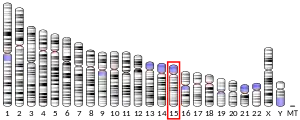| TMOD2 | |||||||||||||||||||||||||||||||||||||||||||||||||||
|---|---|---|---|---|---|---|---|---|---|---|---|---|---|---|---|---|---|---|---|---|---|---|---|---|---|---|---|---|---|---|---|---|---|---|---|---|---|---|---|---|---|---|---|---|---|---|---|---|---|---|---|
| Identifiers | |||||||||||||||||||||||||||||||||||||||||||||||||||
| Aliases | TMOD2, N-TMOD, NTMOD, tropomodulin 2 | ||||||||||||||||||||||||||||||||||||||||||||||||||
| External IDs | OMIM: 602928 MGI: 1355335 HomoloGene: 22817 GeneCards: TMOD2 | ||||||||||||||||||||||||||||||||||||||||||||||||||
| |||||||||||||||||||||||||||||||||||||||||||||||||||
| |||||||||||||||||||||||||||||||||||||||||||||||||||
| |||||||||||||||||||||||||||||||||||||||||||||||||||
| |||||||||||||||||||||||||||||||||||||||||||||||||||
| |||||||||||||||||||||||||||||||||||||||||||||||||||
| Wikidata | |||||||||||||||||||||||||||||||||||||||||||||||||||
| |||||||||||||||||||||||||||||||||||||||||||||||||||
Tropomodulin 2 (neuronal) also known as TMOD2 is a protein which in humans is encoded by the TMOD2 gene.[5]
Function
This gene encodes a neuronal-specific member of the tropomodulin family of actin-regulatory proteins. The encoded protein caps the pointed end of actin filaments preventing both elongation and depolymerization. The capping activity of this protein is dependent on its association with tropomyosin. Alternatively spliced transcript variants encoding different isoforms have been described.[6]
References
- 1 2 3 GRCh38: Ensembl release 89: ENSG00000128872 - Ensembl, May 2017
- 1 2 3 GRCm38: Ensembl release 89: ENSMUSG00000032186 - Ensembl, May 2017
- ↑ "Human PubMed Reference:". National Center for Biotechnology Information, U.S. National Library of Medicine.
- ↑ "Mouse PubMed Reference:". National Center for Biotechnology Information, U.S. National Library of Medicine.
- ↑ Cox PR, Zoghbi HY (January 2000). "Sequencing, expression analysis, and mapping of three unique human tropomodulin genes and their mouse orthologs". Genomics. 63 (1): 97–107. doi:10.1006/geno.1999.6061. PMID 10662549.
- ↑ "Entrez Gene: TMOD2, Tropomodulin 2 (neuronal)".
Further reading
- Strausberg RL, Feingold EA, Grouse LH, et al. (2002). "Generation and initial analysis of more than 15,000 full-length human and mouse cDNA sequences". Proc. Natl. Acad. Sci. U.S.A. 99 (26): 16899–903. Bibcode:2002PNAS...9916899M. doi:10.1073/pnas.242603899. PMC 139241. PMID 12477932.
- Pawlak G, McGarvey TW, Nguyen TB, et al. (2004). "Alterations in tropomyosin isoform expression in human transitional cell carcinoma of the urinary bladder". Int. J. Cancer. 110 (3): 368–73. doi:10.1002/ijc.20151. PMID 15095301. S2CID 875146.
- Kimura K, Wakamatsu A, Suzuki Y, et al. (2006). "Diversification of transcriptional modulation: large-scale identification and characterization of putative alternative promoters of human genes". Genome Res. 16 (1): 55–65. doi:10.1101/gr.4039406. PMC 1356129. PMID 16344560.
- Watakabe A, Kobayashi R, Helfman DM (1996). "N-tropomodulin: a novel isoform of tropomodulin identified as the major binding protein to brain tropomyosin". J. Cell Sci. 109 (9): 2299–310. doi:10.1242/jcs.109.9.2299. PMID 8886980.
- Gerhard DS, Wagner L, Feingold EA, et al. (2004). "The status, quality, and expansion of the NIH full-length cDNA project: the Mammalian Gene Collection (MGC)". Genome Res. 14 (10B): 2121–7. doi:10.1101/gr.2596504. PMC 528928. PMID 15489334.
- Ota T, Suzuki Y, Nishikawa T, et al. (2004). "Complete sequencing and characterization of 21,243 full-length human cDNAs". Nat. Genet. 36 (1): 40–5. doi:10.1038/ng1285. PMID 14702039.
This article incorporates text from the United States National Library of Medicine, which is in the public domain.
This article is issued from Wikipedia. The text is licensed under Creative Commons - Attribution - Sharealike. Additional terms may apply for the media files.



